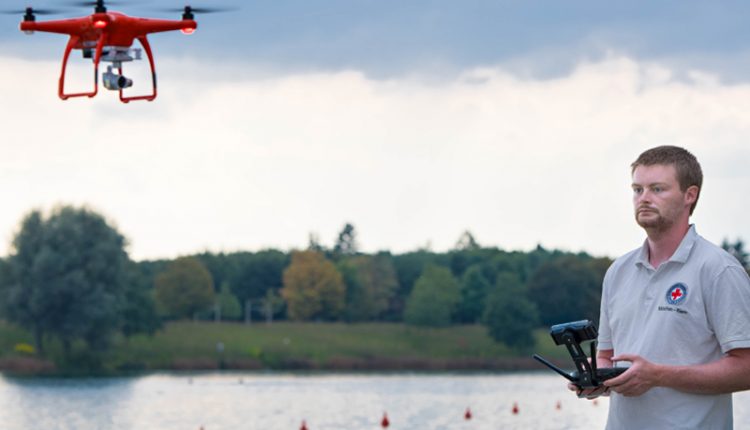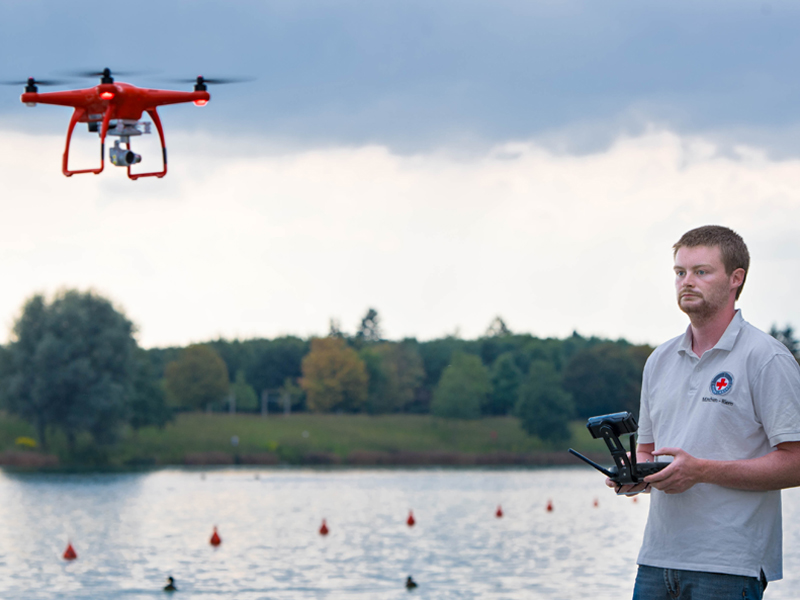
Scientists at the Technical University of Munich (TUM), along with the Munich University of Applied Sciences and Wasserwacht (German Water Rescue Service) at Riem, have developed a new way to locate drowning people — faster — with support from Autel.

The images captured by drones are expected to help in rescue attempts, but still, much work needs to be done.
The project was initiated by Uwe Wagner, Technical Director at Wasserwacht Riem.
“The problem here at the lake is that our lifeguard station is located in a disadvantageous position,” said Wagner.
However, since there is a bend in the lake, it is not possible for the lifeguards to survey the whole area.
“For this reason, there are times when we cannot see people who are drowning and seeking help on the banks, and we have to depend on alerts from the emergency call boxes.”
Then, the race against time begins. First, the lifeguard has to locate the drowning person. The drones should help with that.
Wagner contacted the Institute of Flight System Dynamics at TUM to see if it would be possible to speed the searches up using drones. A preliminary test run last year looked very promising.
Thomas Fuchs, a student of aerospace engineering at TUM has been working on the technical implementation of the project, which is the subject of his master’s thesis, since early August. He started by conducting an on-site test of whether it was even feasible to use the Quadrocopter to detect people seeking help.
“In order to do this, we submerge a few differently colored objects in the lake,” said Fuchs. At depths of two and three meters, there are wood panels, each wrapped in plastic with different color fields, and at a depth of six meters, there is an orange life vest.
The camera was able to detect the objects to a greater or lesser degree, depending on the weather. Sediment, which can cloud the water when it is stirred up by the wind and rain, played an important role.
Michael Krenmayr supervises the master’s thesis. “Our goal is to get the Quadrocopter to fly automatically,” he explains. The drone will fly over a predefined area and search for people who may be drowning”.
“The camera images are transferred directly to a remote station such as a tablet. And of course, ideally with precise positioning. “The operation of the drone needs to be extremely simple and fast,” says Krenmayr.
Also planned is a base station at which the drone can be charged, because the battery only lasts for about 20 minutes. Security systems should be able to intercept any mishaps such as the failure of a rotor. There will also be emergency landing places near the water.
However, swimmers do need not worry that a drone will constantly be flying over the lake in the future; it will be used only in case of an emergency. Unlike a rescue helicopter, the drone barely creates a ripple on the water, also an advantage for visibility.
As for the depth of visibility, this is where the Munich University of Applied Sciences steps into the game. Student Zoubeir Afifi is working on a better sensor with the assistance of Prof. Alfred Schöttl from the Department of Electrical Engineering and Information Technology.
“That will not be easy,” said Schöttl. “The water is sometimes very turbid, making things difficult for a normal camera after a certain depth.” Special cameras can help with this; otherwise, other technologies such as laser sensors could be used. The long-term goal of Munich University of Applied Sciences is to also be able to automatically detect people in need.
Prof. Florian Holzapfel, Head of the Institute for Flight Dynamics at TUM states, “It is not about contracts, work packages, IP and reports. Rather, the project is being sustained by the idealism of those who are doing the actual work to bring something forth.”

Comments are closed, but trackbacks and pingbacks are open.